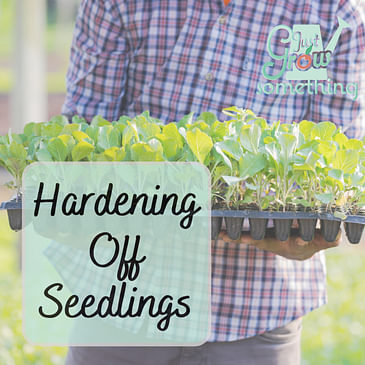Hardening off is a process that helps plants adjust to the outdoor environment, preventing shock and ensuring they thrive once planted in the garden. Gradual exposure helps the plants acclimate to the conditions they will experience out in the garden or in their containers on your porch before you put them out there.
Today on Just Grow Something we’ll go over the exact steps we need to take to harden off our plants prior to putting them out into the garden. This includes whether you’re growing them yourselves or if you’ve just brought them home from the nursery, garden center, or farmers market. Following these steps and displaying some patience will prevent the heartache of putting those plants out and having them fail. We’ll also talk about how to recover if your plants begin display signs of stress after they are already in their permanent home. Let’s dig in.
Question of the Month:
: “What is your biggest pest in the garden and how do you manage it (if at all)?” Leave a voice message from the link in the show notes, respond to the question in Spotify if that’s where you’re listening, send me an email, drop it in the Facebook group or in a DM to me on Instagram, Facebook or TikTok. We’ve already had some good discussions around this in the Facebook group and I will read all the answers on next week’s episode. You have until March 31st to get me your answer.
References and Resources:
Save 10% and get Free Shipping with code JUSTGROW10 at Planter Box Direct
Just Grow Something Merch Shop
Just Grow Something Gardening Friends Facebook Group

